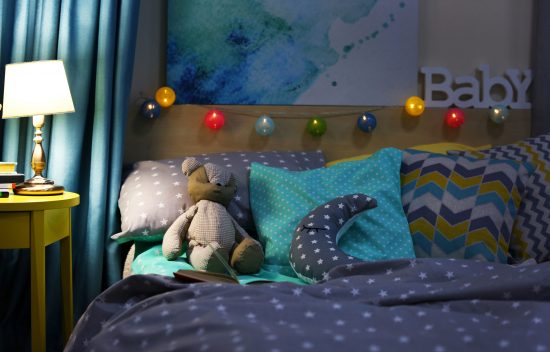
Bedtime routines can be a tricky part of the day for families. Remember to give yourself grace when getting your child ready for bed, because there are many different lifestyles that affect each family’s routines.
- Parents’ work schedules
- Child’s energy levels
- Sensory sensitivities
- Household environment
What works for one family might not work for you, and that’s okay!
Create a Consistent Routine (Same Time, Same Steps)
Children with autism often feel more secure when they know what to what to expect. A consistent routine allows the family to follow the same sequence of events each night.
To create the routine for your family, start by choosing the activities you want included in the bedtime routine. Working in reverse may help! First, decide the time you want your child to be in bed. Then work backwards to identify the activities that need to occur to prepare your child for bed. There may be some trial and error involved in this, which is normal! You and your child are learning what works and doesn’t work.
A bedtime routine may look like this:
- Bath
- Pajamas
- Brush teeth
- Potty Time
- Bedtime story
- Lights Out
Some steps may have challenges, like bathtime or tooth brushing. Adjusting is natural and those trial and errors will ultimately lead you to your goal!
Include Calming Activities into Your Routine
It may be helpful to build-in wind-down time for your child that includes sensory-soothing and calming tasks. Some ideas to try:
- Warm bath or shower
- Gentle massage or lotion
- Deep pressure activities (weighted blanket, body sock)
- Quiet time with a dim light or nightlight
- Soft music or white noise
Need help creating a bedtime routine? One of our applied behavior analysis therapist in MD or our many other clinical locations can help you with this!
Some Strategies to Promote a Successful Bedtime
- Involve your child and offer choices: Have your child participate in the process. Offering choices is a great way of promoting cooperation. To do this, it may be helpful to provide 2 or 3 items. This way, you are narrowing down the options to something you know is manageable and may help prevent power struggles or inappropriate or impossible requests. For example, during story time, show them 3 books and allow them to choose which book they would like to read.
- Rewards work wonders! If bath time is a challenge but your child LOVES bubbles, make it a deal — “First bath, then 2 minutes of bubble fun!” Want them to cooperate even more? Offer extra bubbles after washing up!
- Visual schedules with pictures help kids know what’s happening next (think: “First this, then that”).
- Timers can be a game-changer by helping with transitions and keeping meltdowns at bay – “Two more minutes, then we turn off the water!”
- Nap Times: Try keeping nap times consistent. Individuals with autism often thrive on consistency, so maintaining a regular nap schedule is helpful.
Pick your battles while keeping in mind that you may be tired at the end of the day. Make the routine fun but easy enough for yourself as well.
Creating a Soothing Environment
Want to make bedtime smoother and more relaxing? Set the scene!
- Cozy Up the Room – Try dimming the lights, playing soothing sounds, and adding stuffed animals or soft blankets for extra comfort. Blackout curtains and white noise? Total game-changers!
- Dressing Without the Stress – If getting dressed is a struggle, practice those skills earlier in the day when there's no rush. And for those extra-tough nights? Helping them get dressed is totally okay! Need extra support? Early intervention services can help!
- Make Brushing Teeth Fun! – Turn it into a game by singing a silly song or using themed toothbrushes that your child chooses!
You may not always control when your child falls asleep, but you can control what happens before bedtime. Set your child up for success by creating a consistent and manageable routine that you can follow at night.
Ready for a services consultation? Reach out to our team today!
